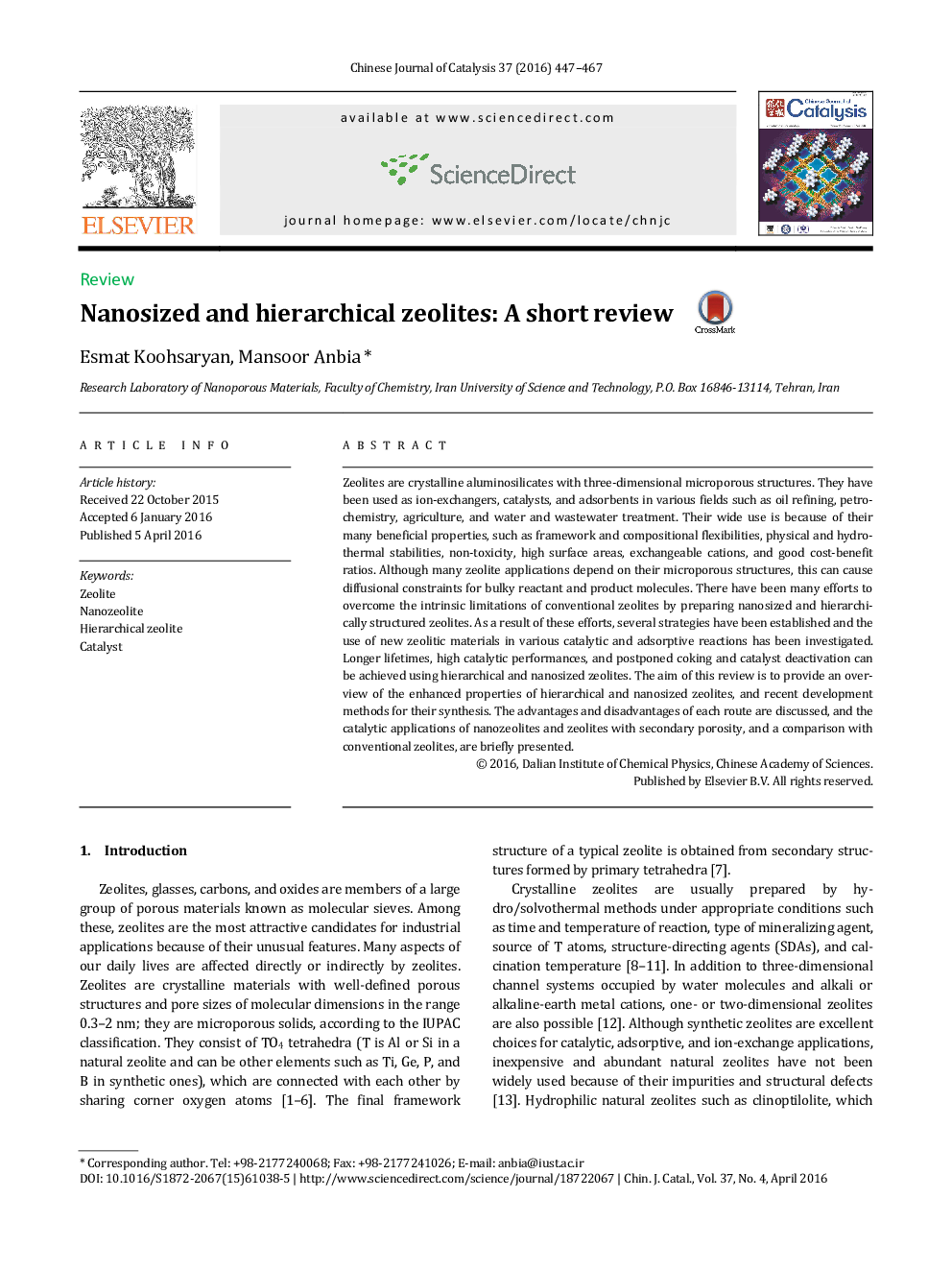| کد مقاله | کد نشریه | سال انتشار | مقاله انگلیسی | نسخه تمام متن |
|---|---|---|---|---|
| 59141 | 1419420 | 2016 | 21 صفحه PDF | دانلود رایگان |
Zeolites are crystalline aluminosilicates with three-dimensional microporous structures. They have been used as ion-exchangers, catalysts, and adsorbents in various fields such as oil refining, petrochemistry, agriculture, and water and wastewater treatment. Their wide use is because of their many beneficial properties, such as framework and compositional flexibilities, physical and hydrothermal stabilities, non-toxicity, high surface areas, exchangeable cations, and good cost-benefit ratios. Although many zeolite applications depend on their microporous structures, this can cause diffusional constraints for bulky reactant and product molecules. There have been many efforts to overcome the intrinsic limitations of conventional zeolites by preparing nanosized and hierarchically structured zeolites. As a result of these efforts, several strategies have been established and the use of new zeolitic materials in various catalytic and adsorptive reactions has been investigated. Longer lifetimes, high catalytic performances, and postponed coking and catalyst deactivation can be achieved using hierarchical and nanosized zeolites. The aim of this review is to provide an overview of the enhanced properties of hierarchical and nanosized zeolites, and recent development methods for their synthesis. The advantages and disadvantages of each route are discussed, and the catalytic applications of nanozeolites and zeolites with secondary porosity, and a comparison with conventional zeolites, are briefly presented.
Graphical AbstractThis review manuscript presents a short definition of zeolites, nanozeolites and hierarchical zeolites and discusses the recent research progress of the synthesis methods and catalytic applications of nanosized and mesoporous zeolites.Figure optionsDownload as PowerPoint slide
Journal: Chinese Journal of Catalysis - Volume 37, Issue 4, April 2016, Pages 447–467
